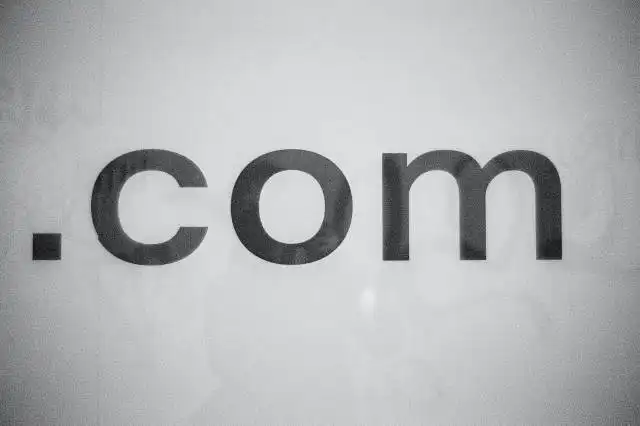Start a Comic Book Store
Embarking on the Adventure of Comic Entrepreneurship
| Updated


COMIC BOOK STORE
Running a comic book store can be a delightful escapade into the world of superheroes and graphic novels for any new entrepreneur! You'll not only become the proud owner of a fantastical universe of storytelling, but also curate an immersive experience for fans who share your passion. This exciting venture involves selling comics, graphic novels, figurines, and other comic-related merchandise. You may even find yourself hosting fan club meetings or comic book signings, turning your store into a true paradise for comic aficionados!
Jump to Business Plan
RELATED BUSINESS IDEAS
Browse ALL Unknown Business Ideas
Discover Your Perfect Domain
Unlock the door to your online success with our hand-picked selection of premium domain names. Whether you're starting a new venture or rebranding an existing one, the right domain can set the tone for your digital presence. Browse through our curated list, each with its unique potential to enhance your brand's visibility and credibility.
COMIC BOOK STORE MINI BUSINESS PLAN
This a quick reality check to help you identify the strengths and weaknesses of your business concept before you dive in.
Expected Percent Margin:
- Gross Margin: 40-50%
- Net Margin: 10-15%
Earnings Expectations:
- Daily Earnings: $100 - $300
- Weekly Earnings: $700 - $2,100
- Monthly Earnings: $3,000 - $9,000
- Annual Earnings: $36,000 - $108,000
Actions to Achieve These Figures:
Stock & Inventory:
- Initial Investment: Around $10,000-$20,000 for a diversified and enticing stock of comics, including both new releases and vintage collections.
- Supplier Relations: Develop enduring relationships with distributors and independent publishers for constant access to new releases and rarities.
Marketing & Customer Acquisition:
- Social Media: Regular updates and interactions on platforms like Instagram and Facebook, where the comic community thrives, is a must. Consider at least 1-2 posts daily.
- Community Engagement: Organize and participate in comic-related events like book launches, artist signings, and cosplay events.
Sales & Customer Experience:
- Staffing: Hire staff with thorough comic knowledge and customer service skills.
- In-Store Experience: Create a welcoming, inclusive, and geek-friendly ecosystem that encourages loitering, browsing, and discovery.
Cost Control:
- Rent: Ideally, rent should not surpass 10% of anticipated monthly revenue.
- Utilities & Maintenance: Typically, expect to dedicate around $200-$300/month.
Business Operations:
- Operational Hours: Operate at least 6 days a week, preferably 8-10 hours per day to accommodate after-school and after-work clientele.
- Transaction Goals: Aim for 20-40 transactions daily, with an average purchase amount of $15-$25.
Remember, these are broad estimates and can vary greatly based on location, economic conditions, competition, and specific operational strategies. Always seek advice from a professional business consultant or financial advisor for personalized advice.
NOT WHAT YOU HAD IN MIND? Here are more ideas
Browse ALL Unknown Business Ideas
Grab Your Business Website Name
Before you get caught up in the whirlwind of setting up your business, invest in a domain name. It's a small but significant step that lays the foundation for your brand and makes it easier for customers to find and trust you. Just like you wouldn't build a house without securing the land first, don't build a business without securing your domain name.
"Why? Can't that wait?" Here's why it shouldn't
Step 1: Determine if the Business is Right for You
Breakdown of Startup Expenses
Before you start a comic book store, you should take the time to research the startup costs associated with the business. This includes the cost of renting a space, purchasing the necessary equipment and supplies, and any licensing or permits you may need. Additionally, you should consider the cost of advertising and marketing, as well as any legal fees associated with setting up the business. Taking the time to research and plan out the startup costs will help you determine if the business is right for you.
Breakdown of Ongoing Expenses
Once you have determined the startup costs, you should also consider the ongoing expenses associated with running a comic book store. This includes the cost of purchasing inventory, paying employees, and any other overhead costs. Additionally, you should consider the cost of insurance, taxes, and any other fees associated with running the business. Taking the time to research and plan out the ongoing expenses will help you determine if the business is right for you.
Examples of Ways to Make Money
Once you have determined the startup and ongoing costs associated with running a comic book store, you should also consider the potential sources of income. This includes the sale of comic books, graphic novels, and other merchandise. Additionally, you could consider hosting events such as signings and conventions, or offering services such as subscription boxes or online sales. Taking the time to research and plan out the potential sources of income will help you determine if the business is right for you.
Step 2: Name the Business
When naming your comic book store, it is important to choose a name that is memorable and reflects the type of business you are running. It should also be easy to pronounce and spell. Consider using a combination of words that are related to comics, such as “Comic Kingdom” or “Comic Emporium”. You should also make sure that the name is not already being used by another business. It is also a good idea to research the name to make sure that it is not trademarked or copyrighted. Additionally, you should consider registering the name with your local government and trademarking it to protect your business.
Registering the Business Name
Once you have chosen a name for your comic book store, you should register it with your local government. This will ensure that your business is legally recognized and will protect you from any potential legal issues. You will need to provide the government with the name of the business, the address, and the type of business you are running. You will also need to pay a fee for the registration. Additionally, you may want to consider trademarking the name of your business to ensure that no one else can use it. This will also help to protect your brand and make it easier for customers to find you.
Step 3: Create a Business Plan
Creating a business plan is an essential step in starting a comic book store. A business plan should include an executive summary, a market analysis, a description of the business, a description of the products and services, a description of the management team, a financial plan, and a plan for marketing and sales. The executive summary should provide a brief overview of the business and its goals. The market analysis should include an analysis of the comic book industry, the target market, the competition, and the potential for growth. The description of the business should include the legal structure, the location, and the mission statement. The description of the products and services should include the types of comic books and other merchandise that will be offered. The description of the management team should include the qualifications of the owners and any other key personnel. The financial plan should include a breakdown of startup expenses, ongoing expenses, and a projected income statement. The marketing and sales plan should include an analysis of the promotional strategies and tactics that will be used to reach the target market.
Step 4: Obtain Financing
When starting a business, it is important to have a plan for financing. There are a few different sources of financing that can be used to start a comic book store. These include traditional bank loans, crowdfunding, and venture capital. Bank loans are the most common type of financing for small businesses, and they can be used to cover startup costs, purchase inventory, and hire staff. Crowdfunding is another option, and it involves raising money from a large group of people online. Finally, venture capital is a form of financing that involves investors who provide money in exchange for a share of the profits.
Considerations
When obtaining financing for a comic book store, it is important to consider the interest rate, repayment terms, and any other fees associated with the loan. Additionally, it is important to make sure that the financing is sufficient to cover all of the startup costs and ongoing expenses. Finally, it is important to make sure that the financing is secured in a way that protects the business in case of default.
Step 5: Secure a Location
When selecting a location for a comic book store, there are several factors to consider. First, the store should be in a visible location with good foot traffic. This will help to draw in customers and increase sales. Additionally, the store should be in an area that is convenient for customers. This could include being close to public transportation or having ample parking. Furthermore, the store should be in a safe area that is free from crime and other potential hazards. Finally, the store should be in an area with a large population of comic book fans. This will help to ensure that the store has a steady stream of customers.
Leasing or Buying a Property
When it comes to securing a location for a comic book store, there are two main options: leasing or buying a property. Leasing a property is often the more cost-effective option, as it requires less upfront costs. However, it does come with the risk of the lease being terminated at any time. On the other hand, buying a property can be more expensive, but it provides more stability and security. Additionally, it can be a great investment as the value of the property can increase over time. Ultimately, the decision should be based on the individual's budget and long-term goals.
Step 6: Purchase Inventory
When it comes to purchasing inventory for a comic book store, it is important to be aware of the current trends in the industry. It is also important to be aware of the different types of comic books available and which ones are popular with customers. It is also important to consider the cost of the inventory, as this will be a major factor in the profitability of the business. Additionally, it is important to consider the storage space needed for the inventory, as well as the security measures needed to protect it.
When purchasing inventory, it is important to purchase from reputable sources. This will ensure that the inventory is of good quality and is not counterfeit. Additionally, it is important to purchase a variety of comic books to appeal to a wide range of customers. This includes new releases, back issues, and graphic novels. It is also important to purchase a variety of merchandise, such as action figures, t-shirts, and other collectibles. Finally, it is important to purchase a variety of supplies, such as comic book bags and boards, to protect the comic books and keep them in good condition.
Tips for Storing Inventory
Once the inventory has been purchased, it is important to store it in a secure location. This will help to protect the inventory from theft and damage. Additionally, it is important to store the inventory in an organized manner, as this will make it easier to find items when customers are looking for them. It is also important to store the inventory in a climate-controlled environment, as this will help to ensure that the comic books remain in good condition. Finally, it is important to keep a detailed inventory of all items in the store, as this will help to ensure that the store is stocked with the right items.
Step 7: Market the Business
The first step in marketing the business is to create a website. This website should include information about the store, such as the types of comics and graphic novels that are available, as well as any special events or promotions that the store is offering. Social media is also an important tool for marketing the business. Creating a Facebook page, Twitter account, and Instagram account are all great ways to reach potential customers. Additionally, creating a blog or podcast related to comics can be a great way to draw in customers. It is also important to create relationships with local comic book stores and comic book conventions, as well as with comic book creators and publishers.
Examples of Advertising Strategies
Advertising the business is another important step in marketing the business. This can include creating flyers and posters to distribute in the local area, as well as creating ads to be placed in local newspapers and magazines. Additionally, creating a mailing list to send out information about the store’s events and promotions is a great way to reach potential customers. Finally, creating a loyalty program or offering discounts to customers can be a great way to encourage repeat business.
Step 8: Open the Store
Opening a comic book store is an exciting venture, but it is important to do it right. Here are some tips for opening the store:
- Have a grand opening. This will draw attention to the store and get people excited about the new business.
- Have a plan for the store layout. This will help customers find what they are looking for and make sure the store looks inviting.
- Have a good selection of comics. This will help attract customers and keep them coming back.
- Have a friendly and knowledgeable staff. This will help customers feel comfortable and make sure they get the best service.
- Have a good marketing plan. This will help spread the word about the store and bring in more customers.
- Have a website. This will help customers find the store and keep them up to date on new releases and events.
- Have a loyalty program. This will help reward customers for their loyalty and encourage them to come back.
- Have a good security system. This will help protect the store and its customers.
- Have a good inventory system. This will help keep track of what is in the store and make sure the store is stocked with the right items.
Final Steps
Finally, it is important to make sure the store is compliant with all local laws and regulations. This includes making sure the store is properly licensed and insured. It is also important to make sure the store is properly staffed and has the necessary supplies and equipment. Once these steps are taken, the store is ready to open and start selling comics!
Step 9: Manage the Business
The ninth and final step to starting a comic book store is to manage the business. It is important to have a plan for how to manage the business, as it will be the key to success. It is important to have a plan for marketing, customer service, and inventory management. Additionally, it is important to have a plan for tracking sales and expenses.
It is important to have a system for tracking customer data and sales. This can be done through a customer relationship management (CRM) system, which can help to track customer information and sales data. Additionally, it is important to have a system for tracking inventory, as this will help to ensure that the store has the right amount of product available.
It is also important to have a plan for marketing the business. This can include creating a website, using social media, and running promotions. Additionally, it is important to have a plan for customer service, as this will help to ensure that customers have a positive experience when shopping at the store.
Finally, it is important to have a plan for managing expenses. This can include tracking expenses, such as rent, utilities, and payroll, as well as creating a budget for the business. Additionally, it is important to have a plan for tracking profits, as this will help to ensure that the business is profitable.
EXPLORE MORE CATEGORIES
Browse ALL Business Idea Categories
TAKE THE NEXT STEPS



